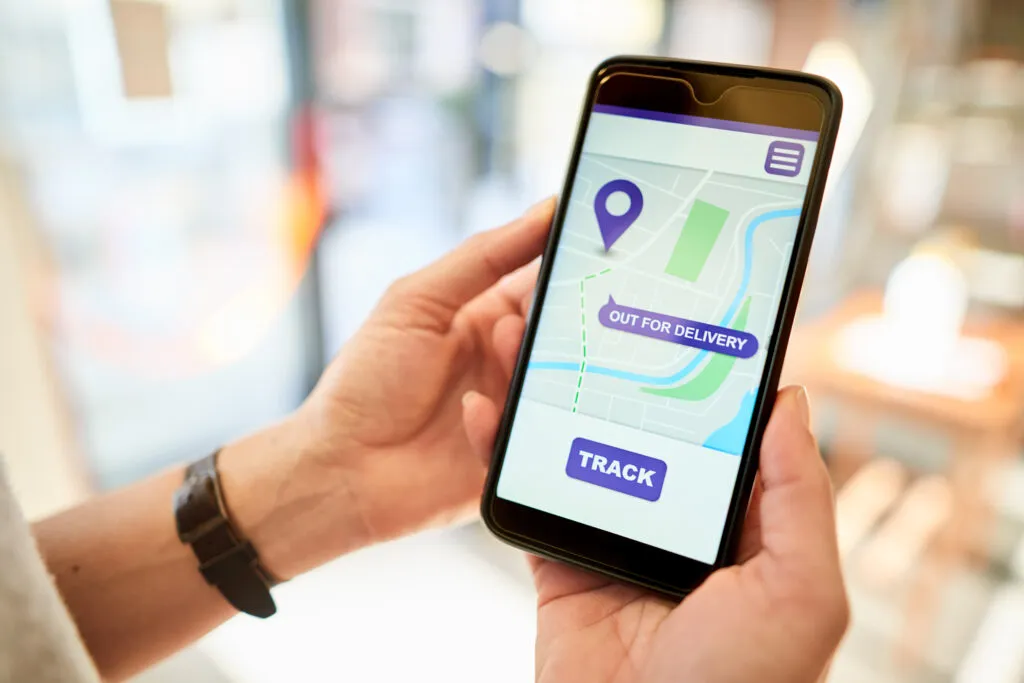
Get home early with RoadWarrior.
Enter your stops, optimize your routes, manage your team – quickly and efficiently.
Try RoadWarrior free for 7 days
Try free for 7 daysImagine this: You’re a business owner, and you’re trying to predict customer demand for your products in the upcoming months. If you can accurately forecast this demand, you’ll be able to make informed decisions about inventory levels, production schedules, and even marketing strategies. That’s where demand forecasting comes in. In this blog post, we’ll explore the importance of demand forecasting, its key components, various techniques, and real-world examples to help you grasp the concept and apply it to your own business.
Short Summary
- Demand forecasting is essential for businesses to anticipate customer demand, make informed decisions and stay competitive.
- Data collection and analysis, forecasting techniques & collaboration are key components of a comprehensive process.
- Real world examples demonstrate how demand forecasting can improve operations & drive growth in various industries.
The Importance of Demand Forecasting
Accurate demand forecasting is a critical aspect of any thriving business. It allows companies to anticipate future demand, make informed decisions, and stay ahead of the competition. Good demand forecasts can lead to enhanced decision-making, improved customer satisfaction, and efficient resource allocation. It’s no wonder that companies invest in developing accurate forecasting models and techniques to better understand their market and prepare for the future.
In an ever-changing world, businesses must adapt quickly to shifting customer preferences and industry trends. By incorporating demand forecasting into their operations, companies can ensure that they are well-positioned to seize opportunities and mitigate risks. In the next sections, we’ll delve into the many benefits of demand forecasting and its various components.
Enhanced decision-making
One of the most significant advantages of demand forecasting is its ability to inform strategic decisions. Businesses can leverage demand forecasts to:
- Make well-informed choices about budgeting
- Make well-informed choices about staffing
- Make well-informed choices about inventory management
- Identify potential growth opportunities
For instance, supply chain planning solutions that incorporate demand forecasts can help companies optimize procurement and capacity management processes through demand planning.
Furthermore, techniques such as regression analysis and trend projection can assist businesses in determining when to place wholesale orders and when to supplement their fulfillment warehouse with temporary staff. By employing demand forecasting, companies can make strategic decisions that ultimately lead to cost savings, increased efficiency, and better overall performance.
Improved customer satisfaction
Meeting customer expectations is a priority for any successful business. A demand forecast plays a crucial role in ensuring product availability and timely delivery, ultimately leading to improved customer satisfaction. By accurately predicting customer demand, businesses can allocate resources more effectively, reduce costs, and enhance operational efficiency. This makes demand forecasting important for the overall success of a company.
For example, companies can leverage tools like ShipBob’s inventory analytics to ensure they have adequate stock levels to satisfy customer demands. By accurately predicting customer needs and adjusting inventory levels accordingly, businesses can minimize stockouts and overstock situations, leading to happier customers and a more efficient supply chain.
Efficient resource allocation
Resource allocation is a critical aspect of any business operation. Accurate demand forecasting allows companies to allocate their resources efficiently, reducing costs and improving overall operational efficiency. This includes:
- Optimizing inventory management
- Adjusting production schedules to meet customer demand
- Ensuring the right amount of staffing is in place to handle fluctuations in demand.
Demand forecasting methods such as qualitative and quantitative techniques can help businesses estimate customer demand more accurately, allowing them to make informed decisions about resource allocation. By incorporating demand forecasts into their decision-making processes, companies can ensure they are using their resources effectively and positioning themselves for success.
Key Components of Demand Forecasting
An effective demand forecasting process consists of several key components. These include data collection and analysis, forecasting methods and techniques, and collaboration and communication. Each component plays a vital role in ensuring the accuracy and usefulness of demand forecasts.
By understanding and addressing these components, businesses can develop a robust and efficient demand forecasting process that enables them to make informed decisions, optimize resources, and ultimately, drive growth. In the following sections, we’ll explore each component in more detail to provide a comprehensive understanding of the demand forecasting process.
Data collection and analysis
The foundation of any successful demand forecasting process is data. Collecting and analyzing past sales data, market trends, and external factors are essential for creating accurate demand forecasts. To ensure a repeatable data analysis process, businesses must integrate their internal systems with demand forecasting solutions and collaborate with other departments to gather comprehensive historical data.
Utilizing statistical techniques and advanced analytics, businesses can process and analyze this data to:
- Identify patterns, trends, and relationships
- Help forecast demand
- Develop more accurate and reliable forecasts
- Inform decision-making
- Improve overall business performance.
Forecasting methods and techniques
There are various types of demand forecasting methods and techniques available, each with its own advantages and limitations. Some demand forecasting models rely on historical sales data and statistical analysis, while others incorporate expert opinions and qualitative information. Examples of these methods include time series analysis, regression models, and machine learning algorithms.
Selecting the appropriate method for a business depends on factors such as the company’s size, industry, and market conditions. By understanding the pros and cons of each method, businesses can choose the most suitable approach for their specific needs, ultimately leading to more accurate and actionable demand forecasts.
Collaboration and communication
Collaboration and communication are crucial aspects of the demand forecasting process. By fostering a culture of collaboration among different departments, businesses can ensure alignment and successful execution of their forecasting strategies. Effective communication of demand forecasts ensures that all stakeholders are aware of the forecasts and can use them to make well-informed decisions.
Moreover, collaboration and communication help identify areas for improvement and refine the forecasting process over time. By working together and sharing knowledge, businesses can continuously enhance their demand forecasting capabilities, leading to more accurate predictions, better decision-making, and improved customer satisfaction.
Demand Forecasting Techniques: A Closer Look
Now that we’ve explored the key components of demand forecasting, let’s take a closer look at specific techniques and methods. These techniques can be broadly categorized into qualitative methods, quantitative methods, and hybrid approaches. Each category offers unique advantages and limitations, making them more or less suitable for different business scenarios.
In the following sections, we’ll dive deeper into each category, providing a comprehensive overview of the various techniques, their applications, and how they can be used to improve demand forecasting accuracy and decision-making.
Qualitative methods
Qualitative demand forecasting methods focus on non-numerical data, such as expert opinions, market research surveys, and other subjective information. These methods can be particularly useful when historical data is unavailable or insufficient, or when trying to anticipate changes in customer preferences and market trends.
Examples of qualitative methods include expert opinions, the Delphi method, and market research surveys. While these methods may not provide the same level of precision as quantitative methods, they can offer valuable insights and help businesses make more informed decisions when quantitative data is limited or uncertain.
Quantitative methods
Quantitative demand forecasting methods, on the other hand, rely on mathematical and statistical techniques to analyze data and generate predictions. These methods are typically more accurate and reliable than qualitative methods, as they are based on:
- Historical sales data
- Market trends
- Economic indicators
- Customer behavior
By using these objective information sources, quantitative demand forecasting methods can provide more accurate predictions for future demand.
Examples of quantitative methods include time series analysis, regression models, and machine learning algorithms. By employing these techniques, businesses can identify patterns and trends in their data, allowing them to make more accurate and actionable demand forecasts.
However, it’s essential to remember that these methods rely heavily on the quality of the data being analyzed, so ensuring data accuracy and consistency is crucial.
Hybrid approaches
Hybrid approaches combine qualitative and quantitative methods to create more accurate and adaptable demand forecasts. These approaches can help businesses leverage the strengths of both qualitative and quantitative techniques, resulting in:
- More comprehensive and reliable predictions
- Better understanding of customer preferences and behavior
- Improved decision-making and resource allocation
- Increased flexibility to adapt to changing market conditions
Some examples of hybrid approaches include combined forecasting models, integration of different forecasting models, and novel techniques that blend expert forecasts with machine learning algorithms. By utilizing hybrid approaches, businesses can better account for the various factors that influence demand and develop more accurate forecasts that can be adapted to changing market conditions.
Implementing Demand Forecasting in Your Business
Now that we have a solid understanding of demand forecasting techniques and their key components, let’s discuss how to implement these methods in your business. Implementing demand forecasting can seem like a daunting task, but with the right approach and resources, it can lead to significant improvements in decision-making, customer satisfaction, and resource allocation.
In the following sections, we’ll provide practical guidance on selecting the right forecasting method, integrating demand forecasting with other business processes, and monitoring and improving forecast accuracy.
Selecting the right forecasting method
Choosing the most suitable demand forecasting method for your business depends on several factors, such as your industry, market conditions, and the size and complexity of your operations. It’s essential to consider the specific needs of your business and the available data when selecting a forecasting method.
When evaluating different methods, consider factors such as:
- Seasonality of your product sales
- Competition
- Type of goods
- Geography
- Economic conditions
- Consumer preferences
- Competitor actions
- Weather
- Events
- Regulations
By taking these factors into account, you can select the most appropriate method for your business and improve the accuracy of your demand forecasts.
Integrating demand forecasting with other business processes
Once you’ve selected the right forecasting method, it’s time to integrate it with your existing business processes. Incorporating demand forecasting into your inventory management, sales planning, and marketing strategies can help ensure that your business is well-prepared to meet customer demand and adapt to changing market conditions.
To successfully integrate demand forecasting with your business processes, consider using demand forecasting software or other supply chain planning solutions. These tools can help automate data collection and analysis, streamline the forecasting process, and facilitate collaboration and communication among different departments.
Monitoring and improving forecast accuracy
Tracking the performance of your demand forecasts is crucial for identifying areas for improvement and refining your forecasting process over time. By monitoring forecast accuracy, evaluating forecast bias, and measuring forecast error, you can gain valuable insights into the effectiveness of your chosen forecasting method.
To enhance forecast accuracy, consider using more accurate data, employing more sophisticated forecasting methods, and incorporating feedback from stakeholders. By continuously monitoring and improving your demand forecasting process, you can ensure that your business remains agile and responsive to changing customer needs and market conditions.
Demand Forecasting Software: Features and Selection Criteria
Demand forecasting software can play a crucial role in streamlining the forecasting process and improving the accuracy of your predictions. With a wide range of software options available, selecting the right solution for your business can be challenging.
In the following sections, we’ll explore some of the essential features to consider when choosing demand forecasting software and provide guidance on evaluating software providers and implementing best practices.
Key features to consider
When selecting demand forecasting software, it’s essential to consider key features such as data integration, customizable forecasting models, and real-time analytics capabilities. These features can help ensure that your software solution is able to meet the specific needs of your business and provide accurate and actionable demand forecasts.
Other important features to consider include:
- Interactive statistical forecasting
- System vs. user sophistication
- Integrated inventory planning
- Up-to-date modeling logic
- Selectable forecast calendars
- Accurate selling day adjustment
By carefully evaluating the available features and selecting a software solution that aligns with your business requirements, you can improve the effectiveness of your demand forecasting process and make more informed decisions.
Evaluating software providers
When evaluating demand forecasting software providers, it’s important to consider factors such as functionality, compatibility, support, and pricing. Assess the software’s ability to generate accurate forecasts, its integration capabilities with other business processes, and its capacity to provide real-time insights.
Additionally, consider the level of customer service, responsiveness, and training provided by the software provider. By carefully evaluating software providers based on these criteria, you can choose a solution that will best meet your business needs and help you achieve your demand forecasting goals.
Implementation best practices
To ensure a successful implementation of demand forecasting software, it’s essential to follow best practices such as staff training, data migration, and ongoing maintenance. Providing adequate training for personnel guarantees that all users understand the software and can leverage it to its fullest extent, ensuring correct usage and timely identification and resolution of any potential issues.
Data migration is a critical step in the implementation process, as it ensures that all relevant data is transferred accurately and that the new system is configured properly.
Ongoing maintenance is necessary to keep the software up-to-date and ensure the successful implementation of new features while addressing any potential issues promptly.
Real-World Demand Forecasting Examples
To illustrate the practical applications of demand forecasting, let’s take a look at some real-world examples from various industries. These examples showcase how companies have successfully implemented demand forecasting methods to improve their operations, enhance decision-making, and ultimately, drive growth.
From retail to manufacturing and service-based businesses, demand forecasting plays a critical role in helping companies better understand their markets and prepare for the future. By learning from these real-world examples, you can gain valuable insights into how demand forecasting can be applied to your own business.
Retail industry
In the retail industry, demand forecasting can be used to optimize inventory levels, plan promotional campaigns, and adjust pricing strategies. For example, a retail company analyzed historical sales data and market research to determine the appropriate inventory levels for their products. By incorporating demand forecasting into their operations, they were able to minimize stockouts and overstock situations, leading to happier customers and a more efficient supply chain.
Furthermore, the company used demand forecasting to devise promotional campaigns and modify their pricing tactics to maximize profits. By leveraging the insights gained from demand forecasting, the retail company was able to make more informed decisions, enhance customer satisfaction, and ultimately, drive growth.
Manufacturing sector
Manufacturing firms can also benefit from demand forecasting by adjusting production schedules and resource allocation based on anticipated product demand. In one example, a manufacturing firm employed machine learning algorithms to forecast product demand and optimize their production schedules accordingly.
By incorporating demand forecasting into their operations, the manufacturing firm was able to achieve the following benefits:
- Better alignment of production schedules with customer demand, reducing the risk of stockouts and excess inventory
- Improved operational efficiency
- Meeting customer expectations
- Increased profitability
This proactive approach to active demand forecasting, in contrast to passive demand forecasting, has proven to be highly effective for the company.
Service-based businesses
Service-oriented companies can leverage demand forecasting to anticipate changes in customer preferences and adapt their offerings accordingly. In one example, a service-oriented company used qualitative forecasting methods, such as expert opinions and market research surveys, to predict changes in customer preferences and adjust their services to better meet customer needs.
By incorporating demand forecasting into their decision-making processes, the service-oriented company was able to introduce new services, alter existing ones, and discontinue services that were no longer in demand. This adaptive approach to demand forecasting enabled the company to stay ahead of the competition, enhance customer satisfaction, and drive business growth.
Summary
In conclusion, demand forecasting is a vital tool for businesses looking to optimize resources, enhance decision-making, and improve customer satisfaction. By understanding the key components of demand forecasting, exploring various techniques, and learning from real-world examples, businesses can better anticipate customer needs and make more informed decisions. As a business owner, it’s essential to invest in demand forecasting to stay ahead of the competition and drive growth in today’s dynamic and ever-changing marketplace.
Frequently Asked Questions
What is demand forecasting with example?
Demand Forecasting is a method used to predict customer demand by looking at past sales data. For example, a car manufacturer might analyze the last 12 months of sales to forecast demand for the next 12 months.
Additionally, the econometric demand forecasting method accounts for relationships between economic factors, such as personal debt levels, correlating with increased demand for home repair services.
What are the types of demand forecasting?
Demand forecasting can be categorized into six types: passive demand forecasting, active demand forecasting, short-term projections, long-term projections, external macro forecasting, and internal business forecasting.


